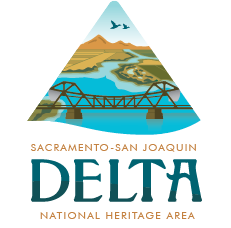Transport Communities
The great migration linked to California’s Gold Rush is purported to be the largest movement of people to a single area on the North American continent. Other areas have comparable numbers associated with their frontier migration, but California’s distinctiveness lies in its rapidity and the uneven pattern of settlement over the land. In 1860, seventy-five percent of the state’s population was concentrated around San Francisco and the interior mining region. As mining declined, most ex-miners moved back to the San Francisco region, but also settled areas adjacent to previous population centers.
Throughout history, the Delta has been a crossroads, a place of environmental change and agricultural fortune and a destination for newcomers. The Delta is a place in between, exceptionally endowed by nature, location and cultural heritage. The Delta region is a landscape layered with elements from different cultural groups and economic activities originating from both modern and historical periods, giving the region’s unique rural landscape multiple meanings. It can be interpreted as symbolic of prosperity and success, and it can equally reveal labor conflict, inequality and exclusion.
The Delta’s earliest towns share the distinction of being important points of convergence and transfer for gold-seeking Argonauts. Transportation nodes and preferred trade routes emerged favoring those sites where goods could be off-loaded and carried by mule and ox teams to the goldfields.
Taken together, these early transport-focused cities share an outward focus of supporting regional development and linkages to areas outside the Delta including transit to and from both the gold-bearing region, and to the emerging population centers of Sacramento and San Francisco. Other early towns included a combination of favorable factors such as siting on natural levees, access to waterborne traffic, and acting as a trans-shipment point. These factors facilitated the establishment of steamboat landings, along with wharves and packing houses that often became the heart of the early business districts.
